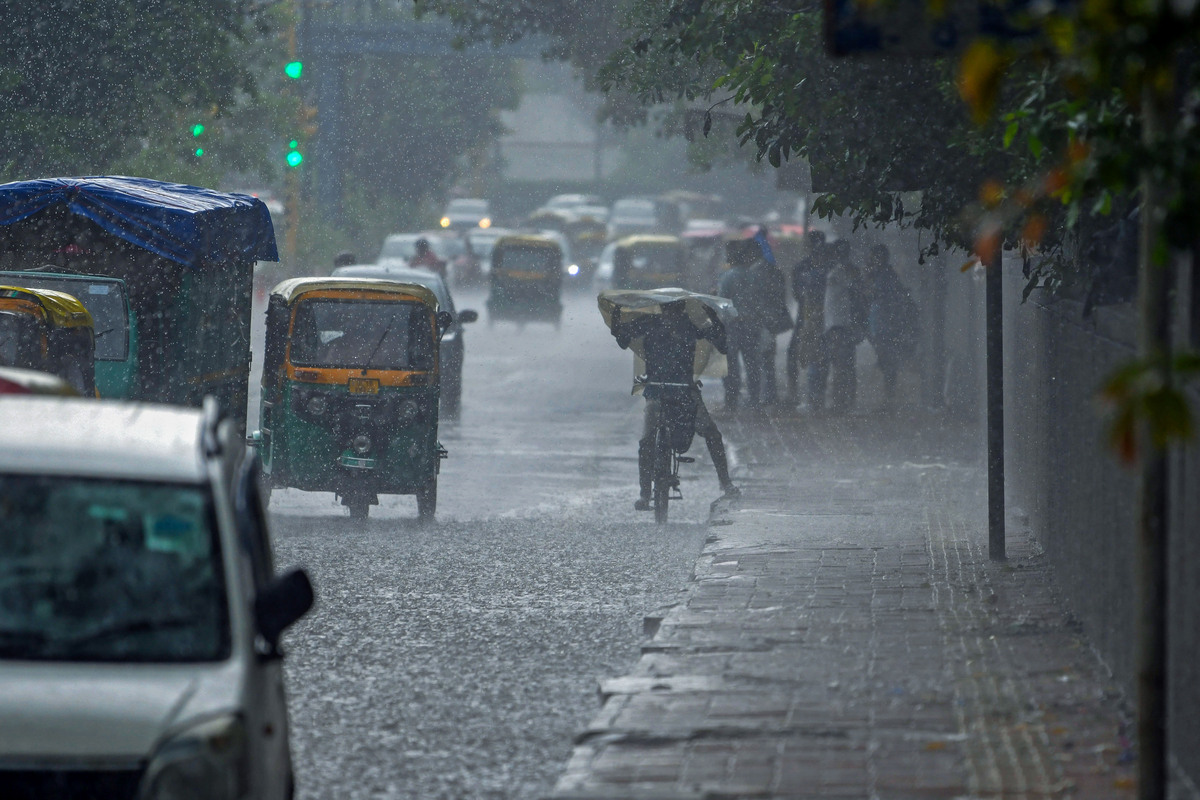India Meteorological Department (IMD) Director General Mrutyunjay Mohapatra says the worst is over for Delhi and several other states where monsoons wreaked havoc. Now the intensity and frequency of rain will be lesser from Wednesday.
Delhi will have normal monsoons and better days for office and schoolgoers. Mohapatra elected as one of the three vice-presidents of the World Meteorological Organisation, the UN agency for monitoring climate change, early warnings, and disaster preparedness, in an interview with Chandrani Banerjee says that this heavy rainfall has nothing to do with climate change.
Advertisement
CB: Would the rest of the week witness more rainfall or the worst is over for Delhi and most of the states?
MM: The worst is over. From Wednesday onwards there will be less rainfall in most parts of north India. Uttarakhand, Himachal Pradesh, and even Punjab will get a sigh of relief from the rain fury. But this spurt of rainfall is not simple to explain. This was due to an occurrence and that is now shifting to Bihar and Uttar Pradesh.
CB: Will Delhi get more rainfall or will it be dry from now onwards?
MM: The worst is over I repeat. Delhi will not be dry but it will get the normal rainfall as expected in the monsoon season. However, there will no longer be incessant rains.
CB: Whenever there is heavy rainfall, it is linked with climate change?
MM: Whenever there is heavy rainfall people draw parallels with the theories of climate change. Actually, it has nothing to do with climate change. This rainfall is due to the interaction between monsoon currents and western disturbances. Such interactions cause heavy rainfall for days. This is what has happened.
CB: Would you term this as a normal occurrence of weather in this season?
MM: Yes. Please look at the past. In 2013, when Kedarnath flash floods happened that was due to the similar interaction of western disturbance and monsoon current. Such interactions cause cloud bursts, flash floods, and incessant rainfall. There may be different names but the scientific reason behind all of these is the same. Also, the impacts depend on the duration of such an occurrence.
CB: The rainfall that we all got is above normal. Why is that?
MM: As I mentioned just now the monsoon season will be wet and we will get rainfall. The interaction doubles the impact and enhances the amount of rainfall. This is the reason that we have had rainfall above normal in the past few days.
CB: How normal is such interactions between monsoon and western disturbances?
MM: This is quite normal in the monsoon season. As I mentioned about the Kedarnath flash flood in 2013, a similar thing repeated in 2021 in Rishi Ganga floods. In 2022, the Kedarnath Yatra was suspended due to excessive rainfall.
CB: From 2013 to 2023, how advanced are we technologically to deal with such situations?
MM: In Kedarnath, the number of deaths were in several thousands. Now after Biparjoy and this week’s rainfall the loss of lives is much less when compared in numbers. However, our aim is to create an environment where not even a single life is lost. But the change is visible. Since Kedarnath our detection system, information system everything has changed. Quick sharing on social media has helped to respond in a short time period. During Biparjoy, there were alerts issued much before the occurrence. There was time to shift people to safer places. And even now when the rainfall is creating noticeable hurdle in our day-to-day life, the alerts have been issued much before the occurrence happened.











